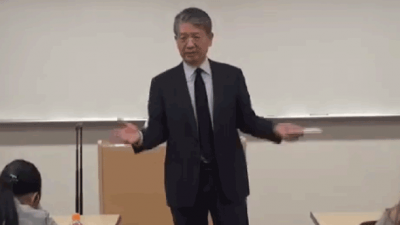講義概要
The UN defines an international migrant a person who stays outside their usual country of residence for at least one year. The world stock of international migrants is estimated 232 million (or 3 % of the world population) in 2013 (UN DESA). With the advancement of ITC technologies and unprecedented expansion of transport networks throughout the world, international migration became easier than ever. It is no longer kept secret that many parts of the world are faced with lack of employment opportunities, growing population, political crisis, armed conflicts, poor economy, and inadequacy of social services. With modern internet communication, mass media and mobile phone, such disparity is quickly known to the rest of the world fueling frustration. Informal networks of migrant workers and diaspora would add an intricate and credible source of information that could greatly facilitate the migration. Furthermore business seizes opportunities to develop a burgeoning industry out of migration. Economic benefits of migration through remittances add great value to migration. According to some analysis, formal remittance now represents the 2nd largest transfer of any legal commodities worldwide, after oil. In 2012, according to the World Bank, the total remittances in the world amounted to at least US$500 billion, enough to boost demand and GDP in receiving countries. They are almost 3 times the value of total ODA and charities. Actual amount of remittances are considered to be double the official figure.
Many of those crossing borders fell into the hands of increasingly sophisticated people-trafficking gangs. The large share of female migrants is a significant characteristic of the current migration. They often work as health care providers, domestic workers and sex workers.
The human migration is critical global issues that affect people. How could labour migration be effectively managed for further development of the world economy? What regulatory framework should be developed in order to protect them from abuse? How could the social protection measures be extended for those migrant labourers? What can the governments, civil society, non-government organisations, and international organisations do to prevent refugees and displaced population and protect them?
What are the policy options? Throughout the course inequality, social justice and protection of individual citizens will be the crosscutting themes. Specific subjects of the course include: (1) dimensions and dynamics of international migration, (2) sending country: Philippines, (3) migration theories, (4) migration policies in destination countries; Singapore and Republic of Korea , (4) state and International migration, (5) managing migration in ASEAN: irregular migration and labour rights and protection, (6) impact of migration on households in origin countries: case from Bangladesh and (7) future of international migration.
参考書
著者名/Authors:Stephen Castles, Hein De Haas & Mark J. Miller
書名/Title:THe Age of Miratgion: International Population Movement in the Modern World
出版社・出版年/Publisher.Year:Plalgrave Macmillan
著者名/Authors:Khalid Koser
書名/Title:International MIGRATION; A Very Short Introduction
出版社・出版年/Publisher.Year:Oxford University Press
著者名/Authors:Russel King
書名/Title:The Atlas of Human Migration: Global Patterns of People on the Move
出版社・出版年/Publisher.Year:Earthscan
